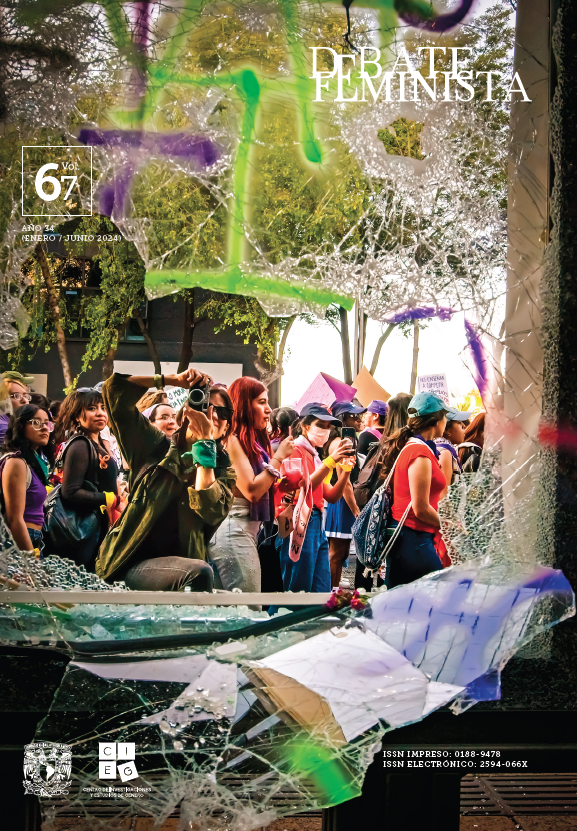The Discourse on Adultery in The Drunkard by Gilda de Abreu and Vicente Celestino: The Representation of Women in the Cinema and Theater
Main Article Content
Abstract
Gilda de Abreu was the second filmmaker to direct a film in Brazil. The article analyzes the discourse on female adultery as a cause of male ruin in the film O Ébrio / The Drunkard (1946) by Gilda de Abreu and in the two versions of the homonymous play (1941, 1947) by Vicente Celestino, Gilda’s husband. The couple’s partnership lasted for almost forty years, during which they engaged in collaborative authorship. The proposal seeks to locate interstitial moments of representation of women between the narrative voices in the three available versions. Using the documentation available in archives and an unprecedented analysis of the censorship of the play, the study is based on the articulation between the composition of the female character, the discourse analysis applied to the field of cinema and the feminist theory of cinema in search of flaws in the representation of female sexuality.
Article Details

This work is licensed under a Creative Commons Attribution-NonCommercial-NoDerivatives 4.0 International License.
Esta es una publicación bajo la licencia Creative Commons Attribution-Non Commercial-No Derivatives 4.0 International (CC BY-NC- ND 4.0). Para mayor información sobre el uso no comercial de los contenidos que aquí aparecen, favor de consultar http://creativecommons.org/licenses/by-nc-nd/4.0/
References
Andrade, Regina. 1992. “Estrela luminosa”, Eco Pós, vol.1, núm. 1, pp. 73-88.
Adamatti, Margarida Maria. 2019. “Esboços intermidiáticos sobre teatro e cinema no Ébrio de Gilda de Abreu”, in Cinema: estética, política e dimensões da memória, Porto Alegre, Editora Sulina/Fapesp, pp. 63-78.
Adamatti, Margarida Maria. 2020. “Configurações espaciais entre cinema e teatro no filme O Ébrio, Famecos - mídia, cultura e tecnología, Porto Alegre, vol. 23, pp. 1-16.
Adamatti, Margarida Maria. 2022. “Análise estilística e reverberações narrativas em O Ébrio (1946), de Gilda de Abreu”, Revista Pós - Revista do Programa de Pós-Graduação em Artes da EBA/UFMG, Belo Horizonte, vol. 12, núm. 24, pp. 238-262.
Barthes, Roland. 2003ª [1957]. Mitologias, Rio de Janeiro, Difel.
Barthes, Roland. 2003b. Fragmentos de um discurso amoroso, São Paulo, Martins Fontes.
Candido, Antonio. 1971. “Da vingança”, in Tese e antítese – ensaios, São Paulo, Companhia Editora Nacional, pp. 1-28.
Celestino, Vicente. 1941. O Ébrio, Biblioteca Nacional.
Celestino, Vicente. 1947. O Ébrio, Acervo Miroel Silveira.
Comolli, Jean e Jean Narboni. 1969. “Cinéma/idéologie/critique”, Cahiers du Cinéma, vol. 216, pp. 11-15.
Doane, Mary Ann. 1985. “The Clinical Eye: Medical Discourses in the ‘Woman’s Film’ of the 1940s”, Poetics Today, vol. 6, núm. 1-2, pp. 205-227.
Ferro, Marc. 2010. Cinema e história, São Paulo, Paz e Terra.
Guerra, Guido. 1994. Vicente Celestino, o hóspede das tempestades, Rio de Janeiro, Record.
Johnston, Claire. 1973. “Women’s Cinema as Counter-Cinema”, in Notes on Women’s Cinema, Londres, Society for Education in Film and Television, pp. 24-31.
Lauretis, Teresa de. 2019. “A tecnologia de gênero”, in Heloisa Buarque de Hollanda (ed.), Pensamento feminista - conceitos fundamentais, 1, Rio de Janeiro, Bazar do Tempo, pp. 49-80.
Meyer, Marlyse. 1996. Folhetim, uma história, São Paulo, Companhia das Letras.
Moraes, Felipe Augusto de. 2017. “A dramaturgia no cinema brasileiro (1936-1951)”, tese de doutorado, São Paulo, Universidade de São Paulo.
Mulvey, Laura. 1989. Visual and Other Pleasures, Bloomington, Indiana University Press.
Pennington, Jody W. 2007. “Mainstream adultery”, in The history of sex in American Film, Westport, Praeger, pp. 151-172.
Prado, Décio de Almeida. 2014. “A personagem no teatro”, in Antonio Candido (ed.), A personagem de ficção, São Paulo, Perspectiva, pp. 81-101.
Szondi, Peter. 2004. Teoria do drama burguês, São Paulo, Cosac Naify.
Zizek, Slavoj. 2009. Lacrimae rerum, São Paulo, Boitempo.



